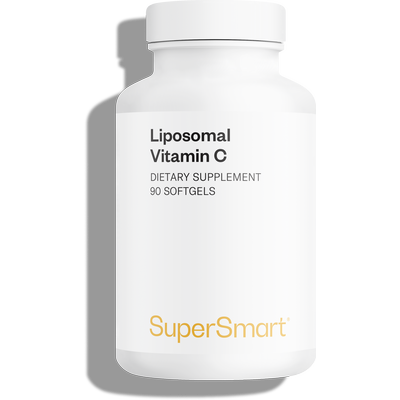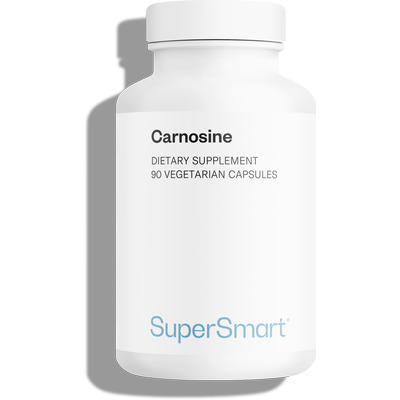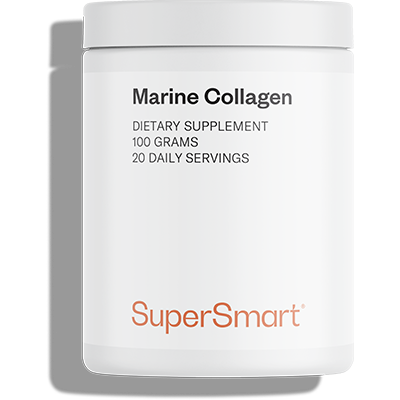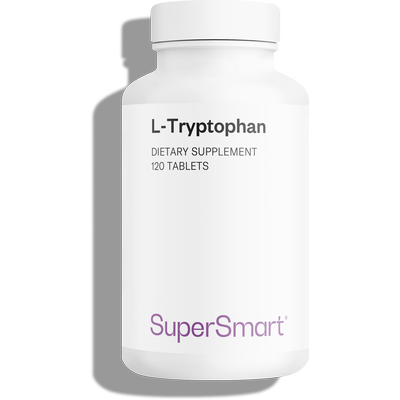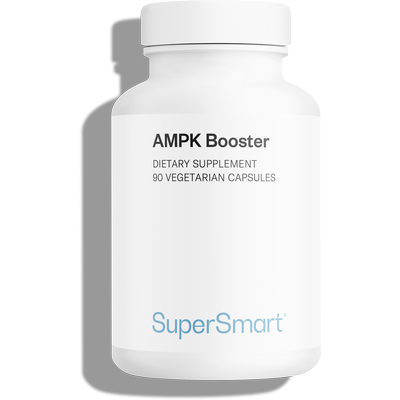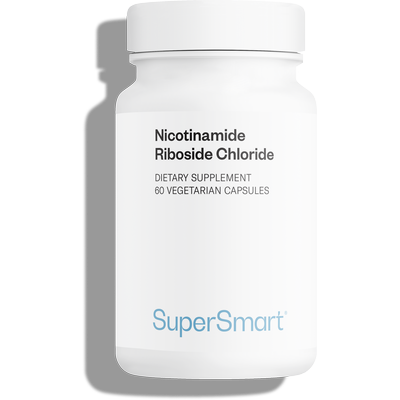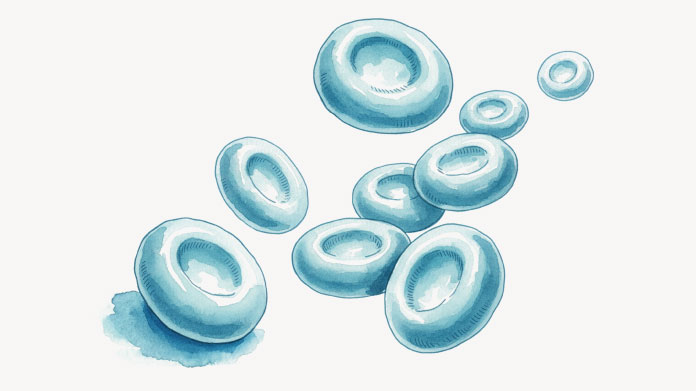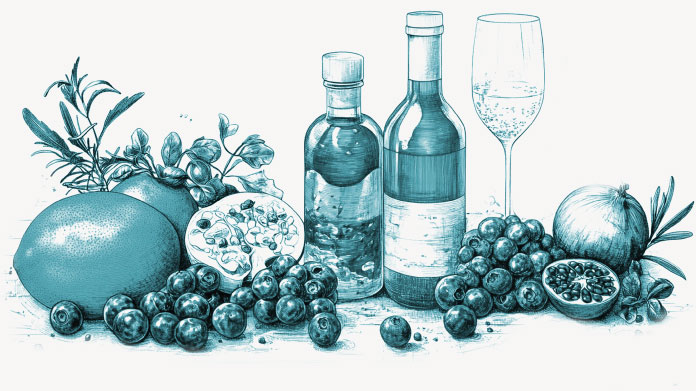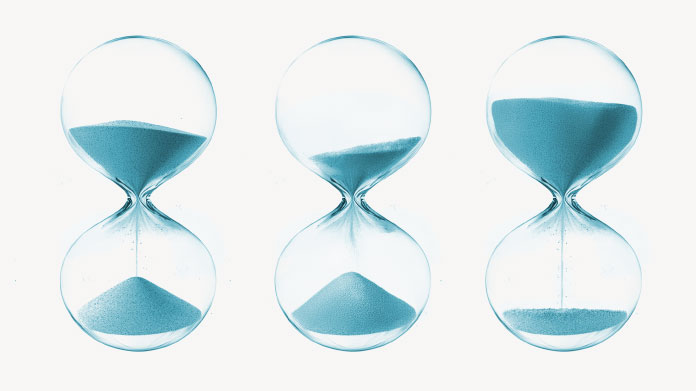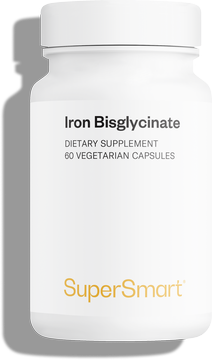Anti-ageing proteins: what are they?
A number of proteins and amino acids are being studied for their potential effects on human longevity. Here we take a look at 3 key anti-ageing proteins and the various ways they can be used to help ‘hold back time’.
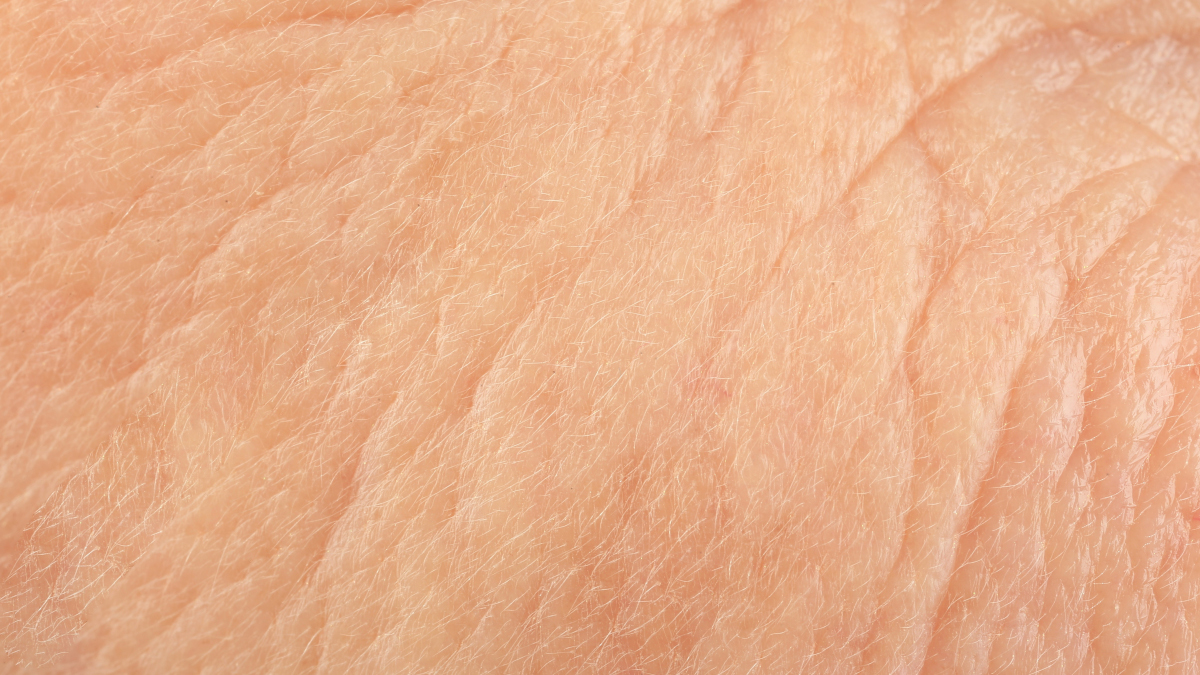
Collagen, crucial for maintaining youthful skin
The skin is composed primarily of water, as well as elastin and collagen, two proteins which help maintain its elasticity and resistance.
Unfortunately, production of these two proteins declines with age, leading to the appearance of fine lines and wrinkles, especially in areas of the body exposed to sunlight. By the age of 60, the skin has actually lost more than a third of its total collagen, synthesis having decreased by 1.5% a year from the age of 25.
To reduce these visible effects of ageing, one solution is to stimulate endogenous collagen production. You can, for example, increase your vitamin C intake (the liposomal version has excellent bioavailability) as it plays a key role in collagen formation. Many people also choose to consume collagen directly (via meat broths or collagen supplements, for example) in order to provide the body with the components necessary for its production (see Marine Collagen).
However, ageing is not the only factor responsible for falling collagen levels, so here are three tips to help you maintain your ‘collagen capital’:
- don’t smoke. Second only to repeated UV exposure, smoking is a major accelerator of skin ageing. Over the long term, it leads to increased activation of collagenase, the enzyme that breaks down collagen;
- limit prolonged exposure to the sun, especially in summer when the UV index is high. It’s a delicate balancing act though, as exposure to the sun’s rays also enables the body to produce essential vitamin D;
- focus on reducing your sources of stress, a sworn enemy of collagen, through frequent use of massage (it stimulates collagen production).
Carnosine as a potential inhibitor of glycation
The breakdown of proteins including collagen is another mechanism of ageing (1). Over time, proteins in the body increasingly fall victim to a process called glycation. In becoming ‘glycated’, they lose their function, and in some cases, accumulate in the body, negatively affecting how functional cells, organs, and indeed our entire bodies, work. Those most affected include albumin, insulin, haemoglobin, immunoglobulins, lipoproteins, and of course ... collagen.
Among the potential inhibitors of this process is carnosine, a dipeptide (a potential ‘piece’ of protein) which the body produces itself. The problem is that levels of carnosine in the body also decline as we get older. Past the age of 70, muscle concentrations of carnosine fall by more than 60%, which partly explains the loss of muscle associated with ageing. That’s why carnosine (see the supplement Carnosine) is sometimes considered to be an ‘anti-ageing’ protein.
There are other potential ways of reducing the glycation process over the long term:
- Drink small amounts of water throughout the day, even when you’re not thirsty. Drinking water is important for reducing glycation.
- Keep your skin well-hydrated, with the aid of water-based moisturising gels.
- Eat a healthy, balanced diet, avoiding refined sugars (glycation is a chemical reaction involving sugar).
Sirtuins to boost DNA repair and slow down ageing
There’s a whole family of proteins, known as ‘youth proteins’, called sirtuins.. They act on a number of cellular mechanisms associated with ageing such as DNA repair, resistance to oxidative stress and combatting inflammation. But once again, their levels decline with age. And since we can’t supplement with sirtuins, we have to rely on two compounds, which according to several studies, are likely to activate their production: NAD, an essential coenzyme present in cells (2-3) and AMPK, a protein kinase, another worthy holder of the title ‘anti-ageing protein’.
With regard to NAD, supplementation is ineffective as the compound is broken down in the gut (4). But that doesn’t happen to its precursors, nicotinamide riboside (NR) which is considered to be potential ‘anti-ageing’ substance for this very reason. The same goes for AMPK: we need to use compounds that activate its internal production and which are able to get past the intestinal barrier. The formulation AMPK Booster from SuperSmart contains compounds of this sort: berberine, fisetin and gypenosides.
Tips for boosting sirtuin production:
- increase your intake of tryptophan (found in wholegrain rice, dairy products, eggs, soy protein, peanuts, pulses, nuts) to support NAD synthesis;
- make sure you consume raw, unprocessed vegetable products which can contain NAD precursors;
- gradually increase your level of moderate, regular exercise as it stimulates production of both NAD and AMPK;
- reduce the number of calories you consume (calorie restriction) throughout life, though we accept this is probably the hardest measure to apply.
SUPERSMART ADVICE
References
- Ghodsi R, Kheirouri S. Carnosine and advanced glycation end products: a systematic review. Amino Acids. 2018 Sep;50(9):1177-1186. doi: 10.1007/s00726-018-2592-9. Epub 2018 Jun 1. PMID: 29858687.
- Hall et al., 2013 J.A. Hall, J.E. Dominy, Y. Lee, P. Puigserver, The sirtuin family’s role in aging and age-associated pathologies J. Clin. Invest., 123 (2013), pp. 973-979
- Haigis and Sinclair, 2010 M.C. Haigis, D.A. SinclairMammalian sirtuins: biological insights and disease relevance Annu. Rev. Pathol., 5 (2010), pp. 253-295
- Gross and Henderson, 1983, C.J. Gross, L.M. Henderson, Digestion and absorption of NAD by the small intestine of the rat J. Nutr., 113 (1983), pp. 412-420
Keywords
5 Days
The products I use are excel·lent
The products I use are excel·lent
ROSAS Josep Maria
13 Days
Delivery is prompt and I never saw a…
Delivery is prompt and I never saw a quality problem with the manufacturing. It is not possible to assess efficacy on a personal basis, since too many factors come into play. Efficacy can only be assessed statistically with a sufficient number of cases.
Roger De Backer
14 Days
I collaborates with the Supersmart…
I collaborates with the Supersmart more than 10 years. Every thing is going good. Quality of the things is good. Delivery comes in time. Five stars definitely !!!
Oleksiy
14 Days
All good
Simple, frictionless site, easy ordering, good delivery updates and execution.
Chris Robbins
16 Days
I feel better
I feel better
Peter Ammann
16 Days
Prompt delivery
Prompt delivery
JAKUB Radisch
18 Days
My new go-to for top quality supplements!
I am buying more and more of my supplements from this superb, high quality company. Cannot recommend it enough. Plus, excellent customer service with a quick, helpful team and speedy deliveries. Highly recommend Supersmart!
Cecilie H.
21 Days
SUPERSMART WHAT ELSE👍
SUPERSMART WHAT ELSE👍
DIEDERLE Christophe
24 Days
Excellent quality products with…
Excellent quality products with innovative formulas, as someone who has been suffering with acid reflux, these supplements have been lifesavers.
Oriana Moniz
24 Days
high quality supplement!
high quality supplement!
GALANT
25 Days
Good service prompt delivery
Good service prompt delivery
Mrs Marcella Reeves
30 Days
I like your clear explanation
I like your clear explanation. And how to make a choice of products for a specific health problem
Ingrid
36 Days
Great product and it arrives quickly.
Great product and it arrives quickly.
SOMMARIVA Gianni
37 Days
Excellent products and fast service.
Excellent products and fast service. What do we need more?
Margarida
41 Days
The variety of products is amazing
The variety of products is amazing, the offers are good and the sending is very fast. I just miss having a bit more of guidance about combinations, possible interactions, etc.
Maria Angeles Verdu

